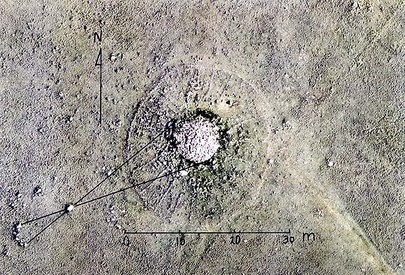 Rich sent me this link, and this is a wonderful example of the way new discoveries (Uranus) often have to battle with old and rigid ideologies (Saturn).
Rich sent me this link, and this is a wonderful example of the way new discoveries (Uranus) often have to battle with old and rigid ideologies (Saturn).
An academic maverick is challenging conventional wisdom on Canada’s prehistory by claiming an archeological site in southern Alberta is really a vast, open-air sun temple with a precise 5,000-year-old calendar predating England’s Stonehenge and Egypt’s pyramids.
Mainstream archeologists consider the rock-encircled cairn to be just another medicine wheel left behind by early aboriginals. But a new book by retired University of Alberta professor Gordon Freeman says it is in fact the centre of a 26-square-kilometre stone “lacework” that marks the changing seasons and the phases of the moon with greater accuracy than our current calendar.
“Genius existed on the prairies 5,000 years ago,” says Freeman, the widely published former head of the university’s physical and theoretical chemistry department.
This doesn’t surprise me one bit. Rich and I have for many years both been avid readers of the work of Graham Hancock, who has devoted his life to searching for evidence of an advanced ancient civilization. It seems perfectly plausible that there are ancient civilizations buried under the ocean after the last ice age in 10,500 bce. After all, archaeologists used to think the story of Troy was just a legend until the city was discovered buried under rubble in the early 20th century.

